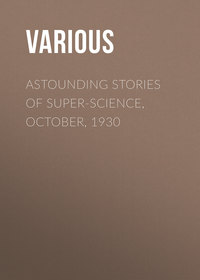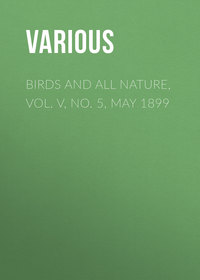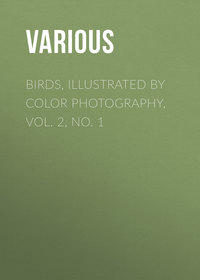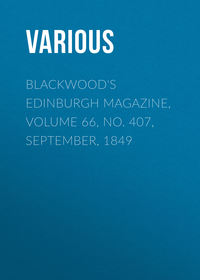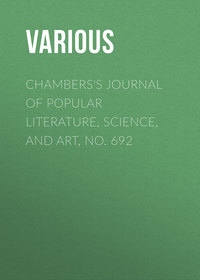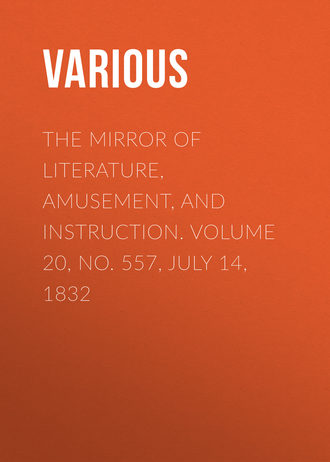 полная версия
полная версияПолная версия
The Mirror of Literature, Amusement, and Instruction. Volume 20, No. 557, July 14, 1832

Various
The Mirror of Literature, Amusement, and Instruction / Volume 20, No. 557, July 14, 1832

BIRTHPLACE OF BEWICK, THE ENGRAVER
The above cottage stands in the village of Cherryburn, near Ovingham, on the banks of the Tyne, about twelve miles west of Newcastle.
In this humble dwelling, hitherto of "unlettered fame," was born, August 12, 1753, THOMAS BEWICK, the celebrated artist and engraver on wood; or more strictly speaking, the reviver of this branch of art. His whole life was one of untiring industry and ardent attachment to the object of his study—the only sure passport to success—which it is truly delightful to contemplate: from the first dawnings of his early genius to the enthusiasm that led him to examine proofs of wood-engravings on the morning of his death. His life is exemplary, inasmuch as it illustrates the homely maxim, that every man is the architect of his own fortune. Apart from this consideration, the memory of Bewick should be cherished by all our readers; since he re-invented the ingenious means by which we are enabled to embellish unsparingly each of our weekly sheets. 1
Of Bewick's genius, and personal habits, many interesting particulars have been preserved. From his earliest years he delighted, above all things, in observing the habits of animals; and it was his fondness for this study that gave rise, while he was yet a boy, to his first attempts in drawing. Long before he had received instruction in that art, he used to delineate his favourites of the lower creation with great accuracy and spirit. His introduction to the regular study of his future profession was purely accidental. He was in the habit of exercising his genius by covering the walls and doors of the houses in his native village with his sketches in chalk. Some of these performances one day chanced to attract the attention of a Mr. Beilby, a copper-plate engraver of Newcastle, as he was passing through Cherryburn; and he was so much struck with the talent they displayed that he sought out the young artist, and obtained his father's consent to take him with him to be his apprentice. This was in the year 1767. In the following year Bewick executed his first wood-cut for Dr. Button's Treatise on Navigation, the diagrams for which work were, at the suggestion of Mr. Beilby, engraved on wood, and printed with the letter-press, instead of being on copper and stitched in with the sheets. Bewick executed the whole of the cuts for Dr. Button's work with so much accuracy, and a finish so greatly beyond what had usually been attained in that species of work, that Mr. Beilby advised him to give his chief attention henceforward to wood-engraving, and make it his profession. He did so during the remainder of his apprenticeship, at the expiration of which he repaired to London, and obtained employment in his trade. He soon returned to the country, and in 1777 he entered into partnership with his former master, Mr. Beilby. Bewick with his taste for rural scenery and enjoyments and the observation of nature, doubtless found little to interest him in London; nor even after he had obtained his highest celebrity, did he ever again think of establishing himself in the metropolis. He spent the remainder of his life in his native district.
At the time of Bewick's first entering into active life, the art of wood-engraving had fallen into the lowest repute. Few of its specimens were superior to the pictures on street ballads of the present day. To explain Bewick's improvements would occupy too much of our space, but, we may observe, generally that the engravings of the above period were mere patches of black and white, till Bewick introduced those beautiful reliefs, or varieties of light and shade which principally form the pictorial effect of an engraving. By this means he raised wood-engraving from a state of contempt to the rank of one of the fine arts.
The first specimen of his talents by which Bewick made himself publicly known was a cut of an old hound, for which, in 1755, he received a premium from the Society of Arts. The block had been cut for an edition of Gay's fables; the complete work appeared in 1779; and immediately attracted general attention by the striking superiority of its embellishments, which were all from wood-cuts executed by Bewick and his younger brother John, who, when Beilby and he entered into partnership, had become their apprentice. From this time the reputation of the artist went on increasing steadily, and he produced a succession of works which very soon gave altogether a new character to his art itself.
Bewick's principal work, or that which established his fame, was his History of Quadrupeds, which appeared in 1790. He had been employed many years in preparing this publication, all the cuts in which were not only engraved by himself or his brother, but were all copied from his own drawings. He had cultivated his early talent for the delineation of animals with unwearied industry: he had not the advantages of academical studies, which education in the metropolis might have afforded him, but he drew from life, taking sketches of all the striking specimens that came under his notice, and visiting whatever menageries of exotic animals were brought to Newcastle. 2 Thus he studied assiduously from nature, and to this course may be attributed the excellence of the cuts in the History of Quadrupeds. Many of the vignettes also, with which this publication was adorned, had uncommon merit as original sketches; for Bewick did not confine his pencil to the mere delineation of animals. His vignettes have been said to partake of his determinate propensity to morality, tenderness, and humour; each telling articulately its own tale. 3 and bearing in every line a lesson.
A catalogue of Bewick's various works will not be expected in this brief sketch. He did not confine himself to animal engraving; for in the years 1795 and 1796, were published by Mr. Bulmer, of Newcastle, the Traveller and the Deserted Village, by Goldsmith; Parnell's Hermit; and Somerville's Clara; with cuts by Bewick. In 1797, appeared the first volume of his History of British Birds: in 1818, he completed his first volume of Fables of Aesop and others. In 1820, Mr. Charnley, of Newcastle, published a volume of Fables, as a vehicle for the impressions of the earlier blocks, both of head-pieces and vignettes, engraved by Bewick when very young, all previous to the year 1785, and for various publications. This collection amounted to upwards of twelve hundred. 4 This volume contains an impression of the celebrated Old Hound, and five portraits, on wood, copies at different periods of Bewick's portrait; that facing the title, from a painting of James Ramsay, is considered the nearest likeness.
It may now be interesting to note a few traits of the genius and personal habits of Bewick, as they have been sketched by his friend, Mr. Dovaston. This gentleman observes:
"It has been said that Linnaeus did more in a given time than ever did any one man. If the surprising number of blocks of every description, for his own and others' works, cut by Bewick, be considered, though perhaps he may not rival our beloved naturalist, he may be counted among the indefatigably industrious. And amid all this he found ample time for reading and conviviality. I have seen him picking, chipping, and finishing a block, talking, whistling, and sometimes singing, while his friends have been drinking wine at his profusely hospitable table. At nights, after a hard day's work, he generally relieved his powerful mind in the bosom of his very amiable family."
"It has been supposed by many, and publicly asserted by a few, that Bewick never wrote his own works, but was wholly and solely employed on the designs; to this I have his positive contradiction, which would be enough; but that in addition to his own Memoir, which I have read in his own MS., I have seen him compose, extract, and translate passages for each bird he has engraved while I was in his house. If his works have any great defect, 'tis the defect of omission; every one laments he has given so little of the history of each bird. I have often offered him to rewrite the whole of the birds wherewith from early and lasting habits I was well acquainted, their characters and manners, interspersed with anecdotes and poetry, particularly from good old Chaucer, the bard of birds, and passages of every bearing brought together, flinging over the whole what may be called the poetic bloom of nature, in which none have so sweetly succeeded as honest White of Selborne. But this he always resolutely refused; alleging that his descriptions, whether original, copied, or compared, were unimpeachably accurate; and that was enough. And not only did he write his own language, but I often thought his talent in that department not surpassed even by the other effusions of his genius; witness his unparalleled Preface to his Fables, and his other Introductions. He said, even to the last, he felt no deficiency of his imaginative powers, in throwing-off subjects for his tail-pieces (as I named them), which were always his favourite exercise; the bird or figure he did as a task, but was relieved by working the scenery and back-ground; and after each figure he flew to the tail-piece with avidity, for in the inventive faculty his imagination revelled."
Mr. Dovaston visited Bewick, at Buxton, in 1827. Here he relates
"There were three windows in the front room, the ledges and shutters whereof he had pencilled all over with funny characters, as he saw them pass to and fro, visiting the well. These people were the source of great amusement: the probable histories of whom, and how they came by their ailings, he would humorously narrate, and sketch their figures and features in one instant of time. I have seen him draw a striking likeness on his thumb-nail in one moment; wipe it off with his tongue, and instantly draw another. We dined occasionally at the public table; and one day, over the wine, a dispute arose between two gentlemen about a bird; but was soon terminated by the one affirming he had compared it with the figure and description of Bewick, to which the other replied that Bewick was next to Nature. Here the old gentleman seized me by the thigh with his very hand-vice of a grasp; and I contrived to keep up the shuttlecock of conversation playfully to his highest satisfaction, though they who praised him so ardently, little imagined whose ears imbibed all their honest incense."
Bewick's observations on the Dove would alone prove him to have been a close observer of nature:
"He said, of all birds he thought the dove tribe most beautiful. Their outline presents every possible variety of the line of beauty; their colours are brilliant and varied; their notes amorous and soothing; their manners gentle and affectionate; their flight both rapid and graceful; and, in all times and nations, they have been emblems of peace, love, and fidelity. They have moreover, many qualities and habits exclusively peculiar to their tribe; they drink differently (by immersion), and have no gall." The "peace, fidelity, and love" of the Dove have, however, been much questioned by naturalists.
Every one will admire the simplicity of mind and heart in the following opinions of Bewick, in his chat with Mr. Dovaston. Paradise, he said, was of every man's own making; all evil caused by the abuse of free-will; happiness equally distributed, and in every one's reach. "Oh!" said he, "this is a bonny world as God made it; but man makes a packhorse of Providence." He held that innumerable things might be converted to our use that we ignorantly neglect, and quoted with great ardour, the whole of Friar Lawrence's speech in Romeo and Juliet to that effect. Again, Mr. Dovaston says, "Every body loved Bewick; all animals love him; and frequently of mornings I found him in the inn-yard, among the dogs, ducks, or pigs, throwing them pieces of biscuit, and talking to them, or to the boors, beside them, waiters, chay-boys, or boots." "Frequently," observes Mr. D., "as I walked with him along the streets of Newcastle, it was gratifying to witness how much and how generally his character and talents were respected." Of all esteem there is none more gratifying than that shown to a good man in his native place.
Bewick's powers of whistling appear to have been extraordinary. "His ear," says the agreeable reminiscent already quoted, "(as a musical feeling is called) was so delicately acute, and his inflexorical powers so nice and rapid, that he could run in any direction or modulation, the diatomic or chromatic scale, and even split the quarter-notes of the enharmonic; neither of which, however, did he understand scientifically, though so consummately elegant his execution: and his musical memory was so tenacious that he could whistle through the melodies of whole overtures; and these, he said, he could obtain having once heard from the orchestra of a playhouse, or a holiday band, in both of which he took extreme delight." Bewick's contempt for luxury was remarkable. He generally slept, even in the depth of winter, with the windows of his chamber open, though in consequence he sometimes, on awakening, found the snow lying on his bed-clothes. For money, which men in general prize so highly, Bewick had all the indifference of a philosopher.
But we must let Mr. Dovaston tell Bewick's last labours, and the close of his well-spent life:
"Having exhausted the quadrupeds and British birds as vehicles to his art, instruction, and amusements, he, late in life, took up a fervent resolution to engrave all the British Fishes, and write their histories. To this his mind was well trained, having been ever a lover of the fountains and rills, the still pools and broad waters, the majestic rivers and the mighty ocean. Here he felt the seeds of his talent stirring all a-life, where he should have to display the beauties of the finny tribe, and treat of the wonders of the great deep. When I was last in Northumberland, they showed me thirty fishes he had cut by way of trial, with the spirit and execution whereof himself was well satisfied, and his judicious friends enraptured; together with more than a hundred tail-pieces, conceived and cut, 'ay, every inch,' with all his usual imaginative appropriation and power. His art here got entirely into a new element; for, as he was forced to show the fishes out of water, he was deprived of his favourite excellence, motion; yet such motion as a fish new-landed has, he has given with elasticity and life: brilliance to the scaly, and lubricity to the smooth; so as to remind the naturalist of excellent old Chaucer's touches of nature, where
"They swommin full of smale fishes lighte,With finnis rede, and scalis silver brighte."A single impression of his John Dorée sold lately in London for ten guineas. And when they do come out, though every admirer will lament he was, long ere completion, called to his blessed account, their sorrow will be softened at beholding with what effect and spirit his animated graver has been caught up by his son."
In the summer of 1828, Bewick visited London about his works. "He was," says Mr. Dovaston, "very honourably received by many learned societies and individuals, of whom, and of whose collections, he wrote in raptures. On his return, the London and provincial papers had many paragraphs respecting this visit, his reception, and his life; to amend the errors of which statements, I must have been writing one at the very hour of his death; for I had not time to stop its insertion in one of the Shrewsbury papers, when I received a short, but most affectionate and affecting letter from his son, informing me, 'as his father's most valued friend,' that he expired, in full possession of his fine and powerful mental faculties, in quiet and cheerful resignation, on the 8th of November, 1828, in the 76th year of his age. On the morning of his death he had the satisfaction of seeing the first proof-impression of a series of large wood-engravings he had undertaken, in a superior style, for the walls of farm-houses, inns, and cottages, with a view to abate cruelty, mitigate pain, and imbue the mind and heart with tenderness and humanity; and this he called his last legacy to suffering and insulted Nature."
MANNERS AND CUSTOMS
FUNERAL GARLANDS
Mr. Rhodes, in his interesting Excursions in Derbyshire, notices the following rite at the village of Hathersage: "In this church we observed the traces of a custom that once generally prevailed in various parts of the kingdom, but is now almost totally disused; when unmarried women died, they were usually attended to the grave by the companions of their early years, who, in performing the last sad offices of friendship, accompanied the bier of the deceased with garlands tastefully composed of wreaths of flowers and every emblem of youth, purity, and loveliness, that imagination could suggest. When the body was interred, the garlands were borne into the church, and hung up in a conspicuous station, in memory of the departed. In Hathersage Church there were several of these memorials of early dissolution, but only one of a recent date: the others were covered with dust, and the hand of time had destroyed their freshness."
In Mr. Tymms's Family Topographer, vol. ii. we read—"In Stockton Church, Wilts, is a piece of iron frame-work, with some remains of faded ribbon depending from it. It is the last remain of the custom of carrying a garland decorated with ribbons before the corpse of a young unmarried woman, and afterwards suspending it in the church. This instance occurred about thirty years ago."
THE DRUIDS AND THEIR TIMES
Translated from the Notes to Oberon, Uber das romantische Epos. By C.M. WielandThe people were, during this period, in a state of the most abject vassalage; two classes alone possessing all rank and dignity, and for the most part all the riches of the country. These were the Druids and the warriors. The former composed an order consisting of three classes, Druids, Prophets, and Bards; all of whom were subject to the power of the Arch-Druid. To this order appertained the knowledge of all the sciences which were then understood. The Druids were the expounders of religious mysteries, the framers of laws, the pronouncers of judgments, and the arbitrators of rewards or punishments. The immunity which they enjoyed from war, allured many young men to enrol themselves in this order. Their education was a poetical one, for it was necessary to learn by rote several thousand verses, in which all the knowledge then extant was contained.
Kings were the servants of the Druids; and could not, without their sanction, declare war or conclude peace; nor even assemble a council. In reality, the Druids possessed the kingly power, and those who bore the name of royalty, were the mere agents who executed their commands. The first had all the authority; the latter only the odium, which attached itself to the office of the sovereign. In matters of little importance, they yielded to the monarch a trifling pre-eminence. He was permitted to wear seven different colours in his cloak, while they were modestly content with six. But even in things of imaginary importance, the Druids took care, that while they conceded but little to their king, no one should be nearly equal to them in dignity. Persons of the highest rank were only allowed to wear four colours, and the inferior grades proportionally fewer. The Druids wore long garments reaching to their heels; all others had them so short that they scarcely covered the knees. Their hair was kept short, the rest of the nation wore theirs long; while they suffered their beard to grow, others were obliged to submit their chins to the knife. They carried in their hand a white staff, called "Slatan drui eachd," or magic wand, and hung around their necks an amulet in the form of an egg, set in gold. The object of these distinctions appears to have been, that no one might fail to recognise a Druid at the first glance, and pay him the respect which his office was supposed to demand.
THE SKETCH-BOOK
RECOLLECTIONS OF A WANDERER
The Chase.
...."It is past eleven," answered Lieutenant –, as he descended the companion way, after giving some orders on deck; "a regular gale this, by Jupiter; but we are spinning away ten knots, off and on."
I stirred the fire in the cabouse, which threw a flickering light around the cabin,—now revealing the half-concealed face of a sick or sleeping passenger in the larboard tier of berths, then sinking as suddenly into gloom. The Lieutenant, Major F–, and myself, barring the boy, were the only souls astir aft below hatches. We were soon engaged in the agreeable discussion of grog and small talk. Nothing interrupted our conversation. The heavy lashing and rush of the weltering sea on the quarters—the groaning and straining of the vessel—the regular strokes of the engines which boomed indistinctly yet surely on the ear, were alike unattended to. Impelled by that mighty power, we almost bid defiance to wind and weather. As the glass circulated, the Lieutenant amused us in his own dry way with some early recollections of service; and knowing that the Major had been quartered in the Emerald Isle in "Ninety-eight," I pressed him to give us some memento of that eventful period. "Come F–, spin us a yarn, as our topmen used to say round the galley-fire, during the night-watch," added the Lieutenant.
"Now you mention ninety-eight," he replied, "I remember a 'beautiful bit of a story,' as Pat would say, which occurred that autumn; its hero was a brother officer, a particular friend of mine—it may serve to keep you awake."
Here it is:
Lieutenant Smyth had entered the army only a few months, when his regiment was suddenly ordered to march from very pleasant quarters in Devonshire to the north-west of Ireland. The change at any time would have been unpleasant, but the service they were entering upon was particularly irksome and jarring to the feelings. Grumbling, in a military man, is, however, downright folly, and they soon made themselves tolerably at home in their new quarters. It is needless to dwell upon the disturbed and distracted state of the country, or on the military movements of the time. After the regiment had been quartered at the town of – for some months, Smyth obtained a week's leave of absence from the commanding officer, having received a pressing invitation to visit a gentleman's family, to whom he had letters of introduction, and who resided more than twenty miles from –. This town bordered on a very wild, hilly moorland track of country, then, and perhaps now, the refuge of numerous bands of smugglers, and then also a hiding-place for a number of unfortunate people with arms in their hands. The road—if such it could be called—to his friend's house ran principally along the borders of this territory, though it sometimes diverged into it for several miles. However, matters had been tolerably quiet in the immediate district about – for some time, and he resolved to go, especially as there was capital sporting at L–. It is unimportant to enter into a narration of all his sporting feats—how many birds he bagged, or how many salmon he caught, or ought to have caught, had it not been for some "untoward" occurrence, specifying the exact weight of the missing fish to an ounce—as fishermen generally do. On the fourth afternoon after his arrival, a letter was put into his hands, (just as the cloth was drawn, and the party were going to discuss the superlative merits of some genuine poteen,) which the servant said had been brought by a man, who waited in the hall. It was from Colonel –, and briefly stated that peremptory orders had just been received from head-quarters, that all officers absent on leave should instantly return to duty. This was a disagreeable piece of intelligence, particularly at that hour, but necessitas non habet legem, as Dr. Birch used to tell our hero at school—the orders were imperative. Long and loud were the laments and remonstrances of the party, we are assured. After ordering Dart to be saddled, the Lieutenant stepped into the hall to have a moment's survey of the bearer of the letter, who the Colonel informed him in a postscript was a man well acquainted with the country, and would safely guide him back to –. He found a tall, lumbering sort of fellow, one of the "finest pisantry in the world," whose appearance was not much in his favour. He started on seeing Smyth, who fancied that he discovered something deeper in the glance of his eye than his bogtrotting bearing first betokened. But it was only transitory; the fellow had a straight-forward story to tell, and of course Colonel – would send a trustworthy messenger. Dart was soon ready at the door, and away they marched on their journey to –. Five and twenty miles across a country—and such a country on an autumn night, was not a very cheering prospect. The guide did not belie his active appearance, but though Smyth repeatedly endeavoured to keep up a conversation, he seemed to shrink from inquiry, and went doggedly on his way, returning at last merely monosyllabic replies when addressed.





